The quarter was made to replace those "two bit" coins of the past.
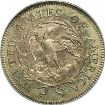
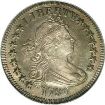
The quarter denomination began production in 1796 and are still being made today. In the beginning, much attention was given to both the design of the coinage as well as the weight of gold, silver, and copper coins.
The design of the 1796 quarter was created
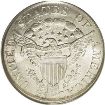
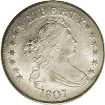
by a very well known artist named Gilbert Stuart. His portrait of Mrs. William Bingham is featured on all Draped Bust Coinage of that era.
The United States Mint hired Robert Scot as the chief engraver because at that time the
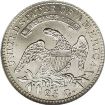
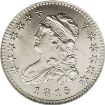
U.S. had a lack of skilled engravers to choose from. Scot was a banknote plate artist by trade and knew nothing about engraving. He had never even made a device punch when he was hired. The mint knew his lack of experience would cause problems so they also hired John Eckstein to be Scot's assistant.
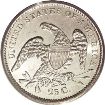
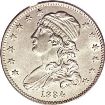
Neither of these men were skilled engravers and its incredible the coins look as good as they do.
The exact weight of the coins was of paramount importance. Mint officials knew that when the coins left the mint they would
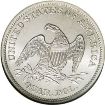
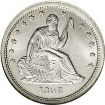
be a reflection of the country. Thus, the coins should be perfect in every respect, especially weight! This is the reason that most early issues display adjustment marks
on the planchets before striking the coins.
The Federal Government had a goal of
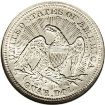

replacing all Spanish coins. This coin was to replace the Spanish Two Reales commonly referred to as "two bit" or 25 cent piece. These silver coins accomplished that goal
and the use of the Two Reale stopped, however the term "two bit" still remains.


In 1999 the U. S. Mint launched its 50 state quarters program. The Mint would release five regular issue Washington quarters every year for the next ten years. The coins would be released in the order at which they were admitted to the union from 1999 to 2008. This program has had a major impact on the


hobby, increasing awareness, and building coin knowledge for future generations of collectors. If you are thinking of starting a coin collection, this is a great place to begin because it offers a great variety of coins that are both inexpensive and easy to obtain.


This denomination has had an impressive array of different design types over the years, including Draped Bust, Capped Bust, Seated Liberty, Barber, Standing Liberty, and Washington designs. This denomination has been a big hit with type coin collectors, and with good reason. The large selection of


quality coins on the market makes it relatively easy to build a high grade type set for these coins.
Seventeen major design modifications exist for this denomination, they are as follows:


Draped Bust Type Small Eagle (1796 only)
Draped Bust Type Heraldic Eagle (1804-1807)
Capped Bust Type Large (1815-1828)
Capped Bust Type Reduced (1831-1838)
Seated Liberty Type no Motto (1838-1866)
Seated Liberty Type Arr and Rays (1853 only)
Seated Liberty Type Arr no Rays (1854-1855)


Seated Liberty Type Motto (1866-1891)
Seated Liberty Type Arrows (1873-1874)
Barber Type (1892-1916)
Standing Liberty Type 1 (1916-1917)
Standing Liberty Type 2 (1917-1924)
Standing Liberty Recessed Date (1925-1930)
Washington Type Silver (1932-1964)


Washington Type Clad (1965-1998)
Washington Type Bicentennial (1976 only)
Washington Type Statehood (1999-2008)






Quarter Back to Coin Collecting Homepage


